Back to the Land
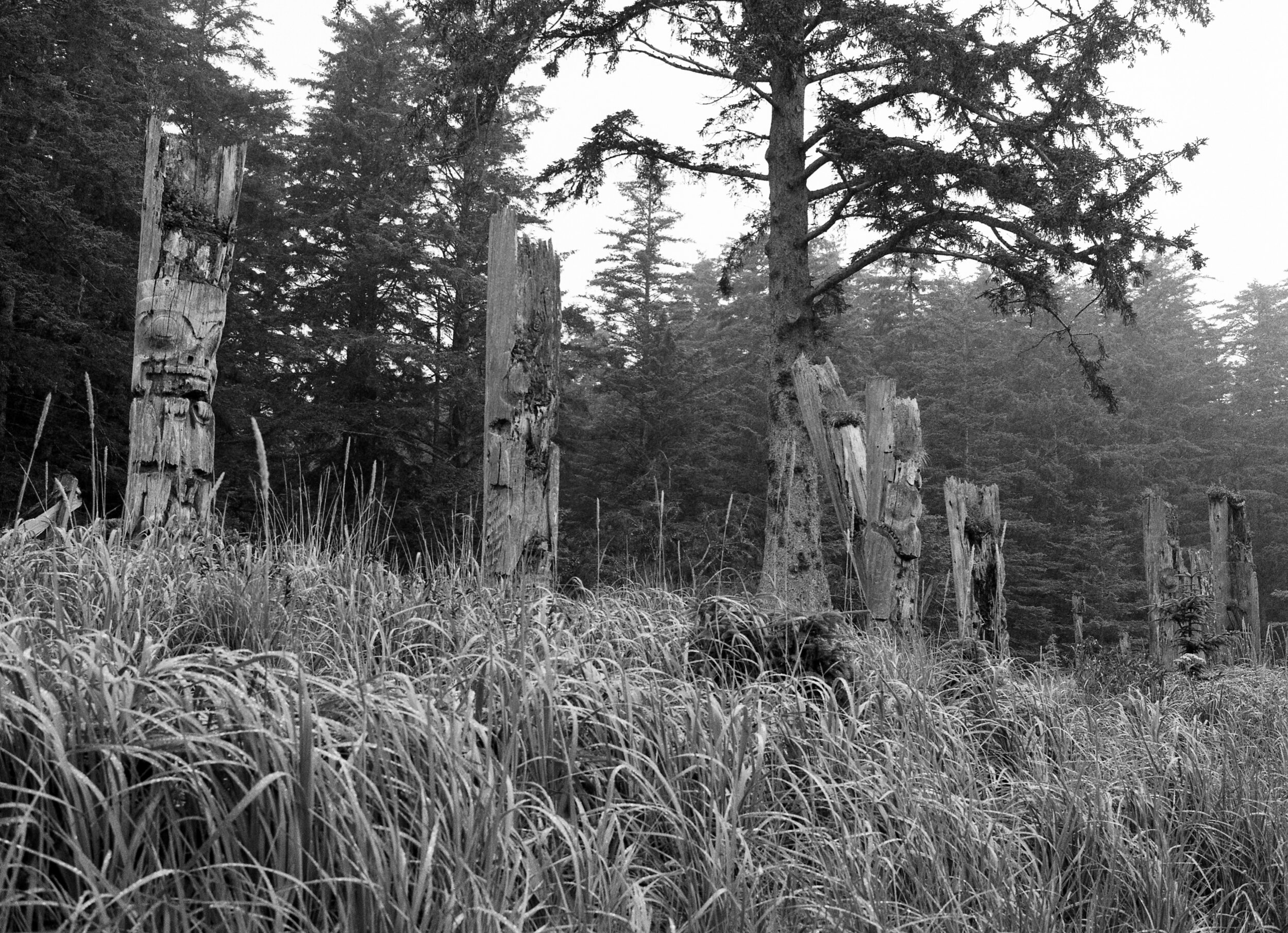
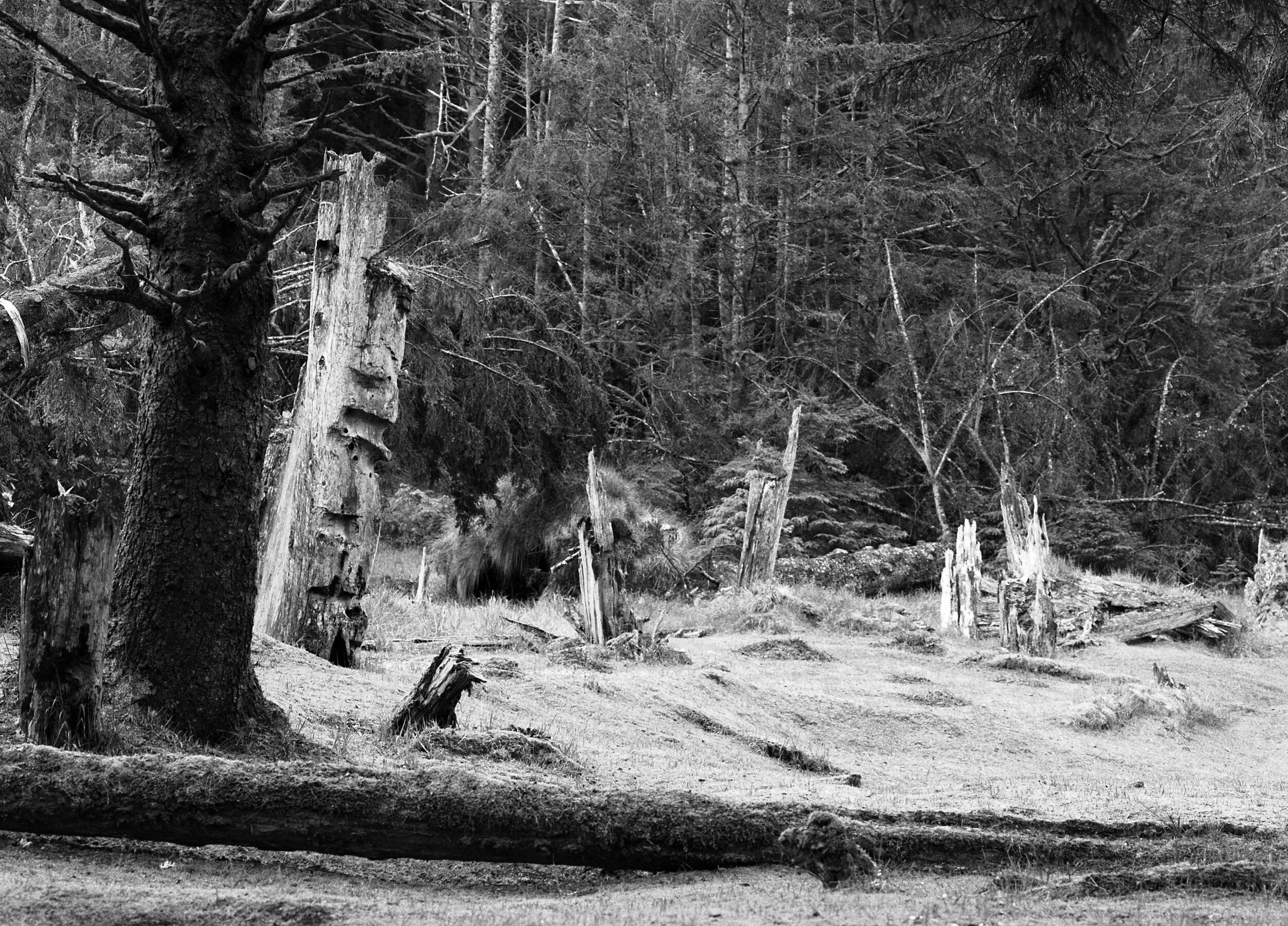
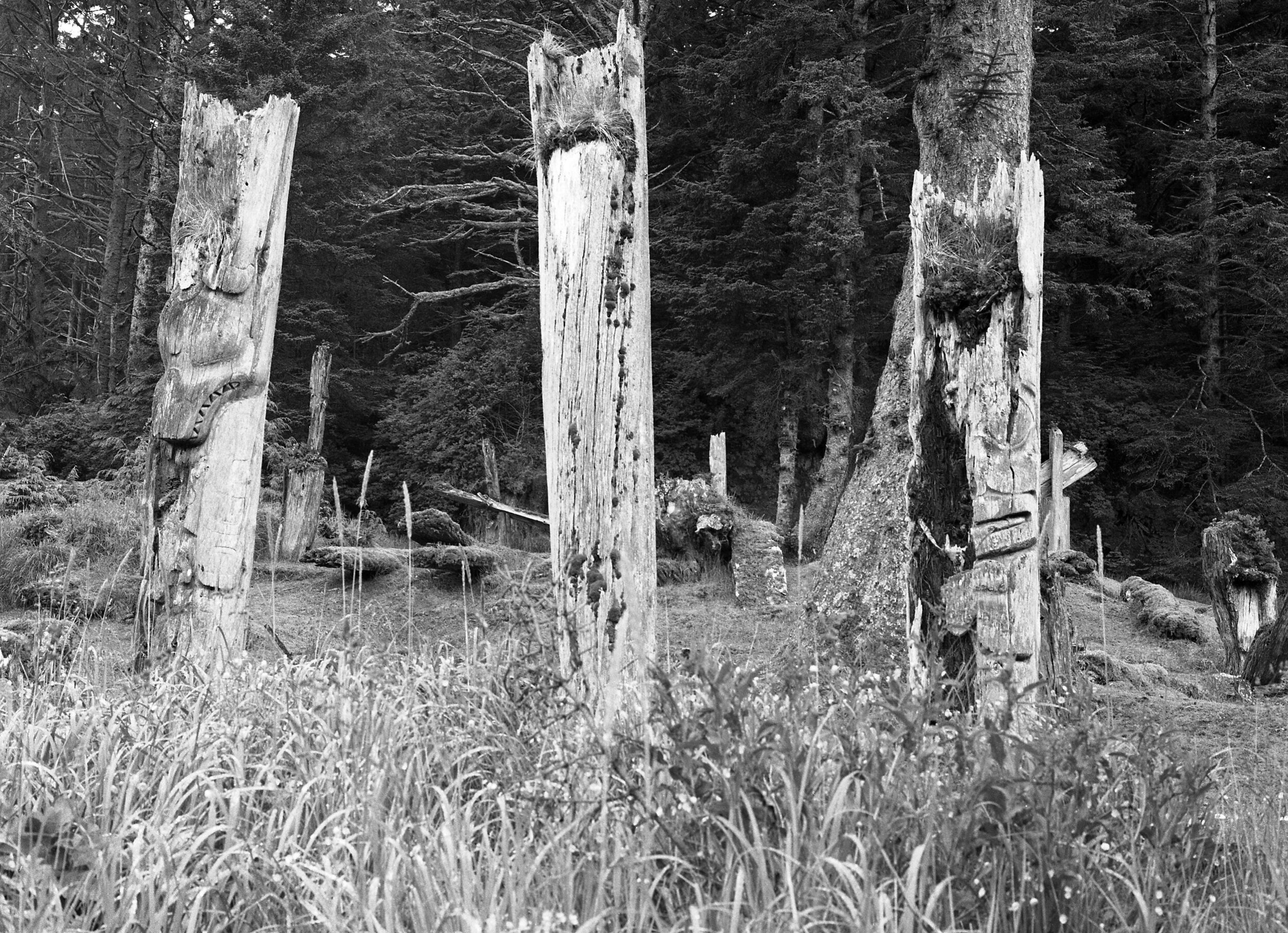
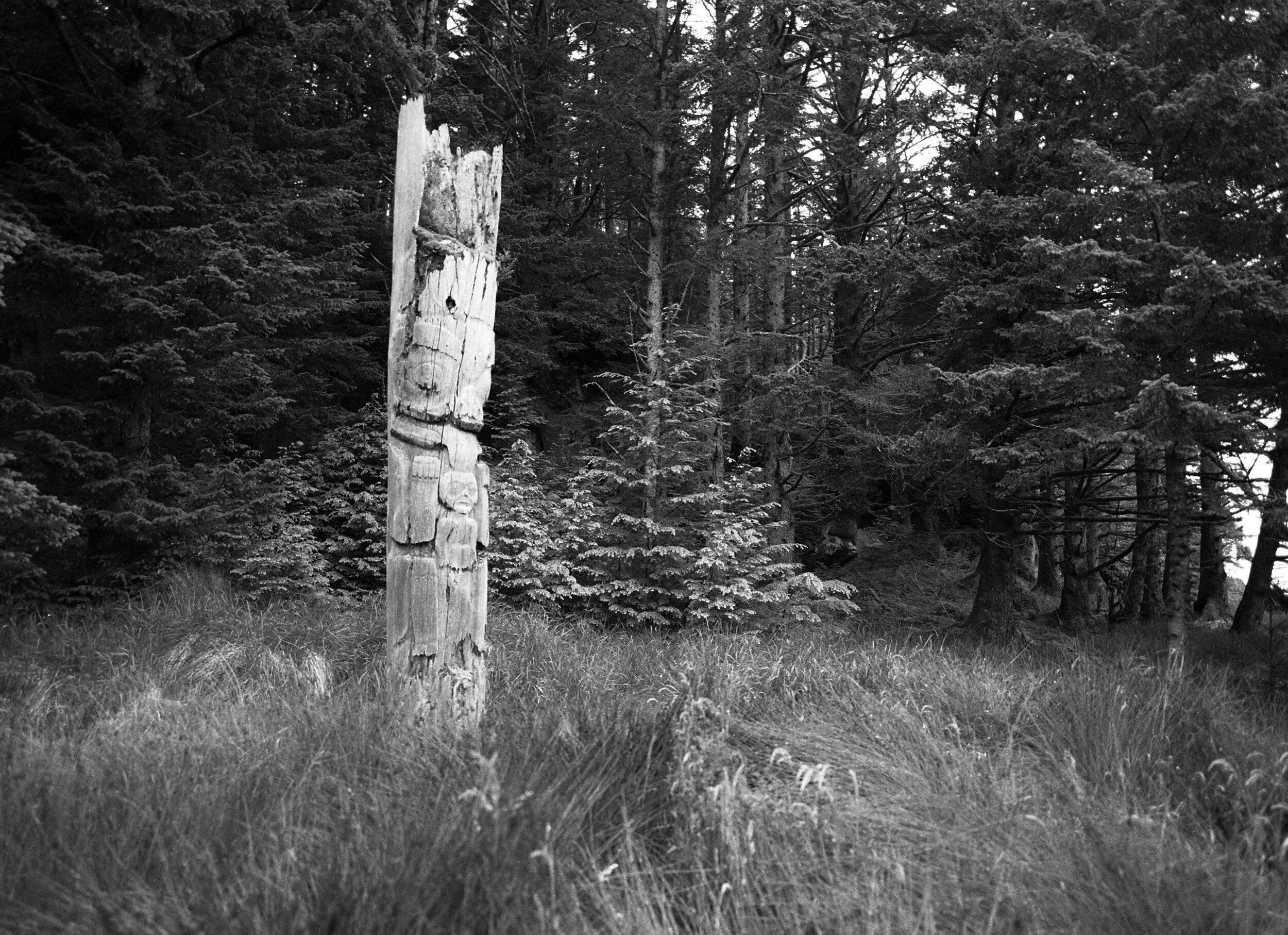

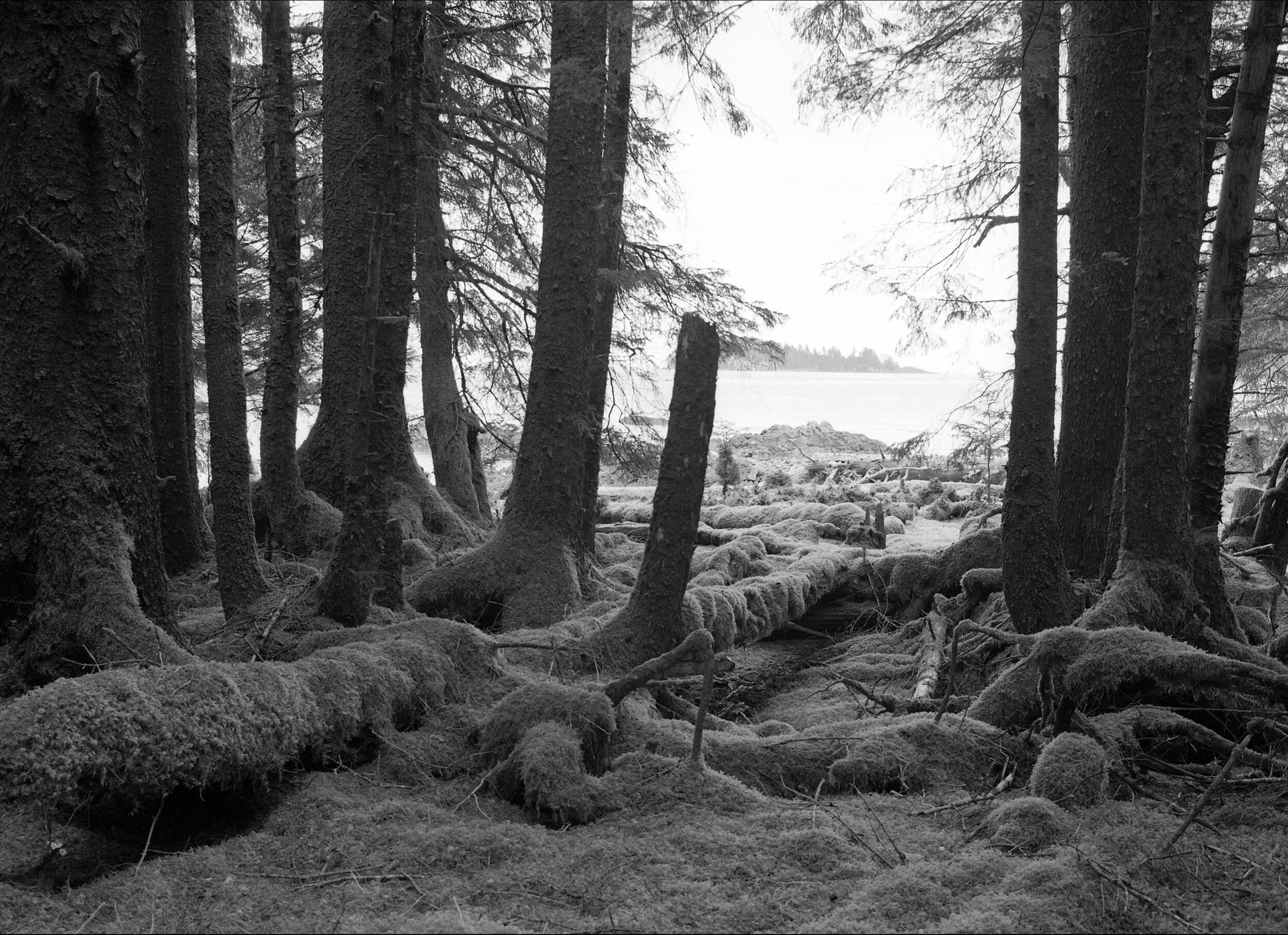
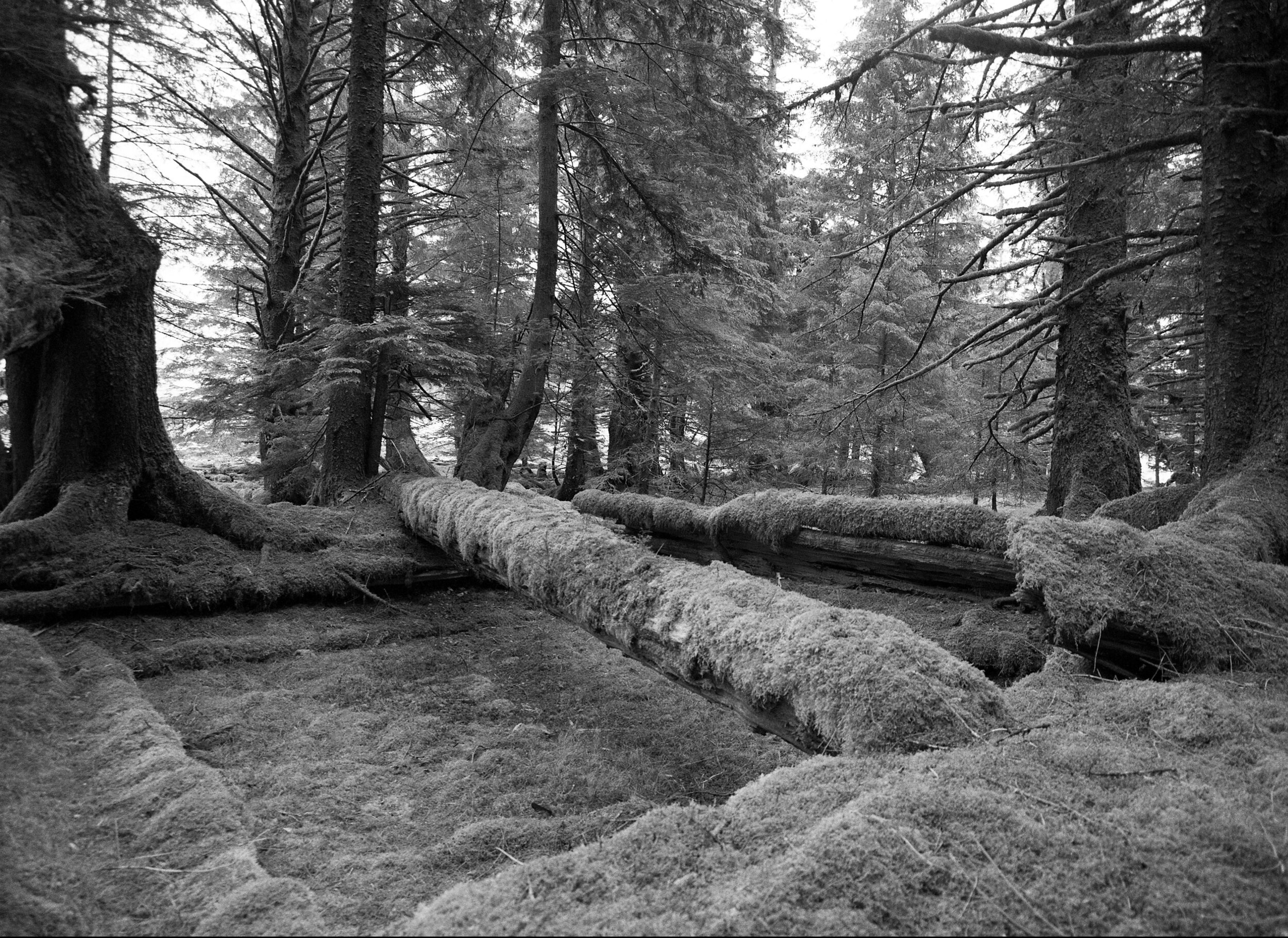
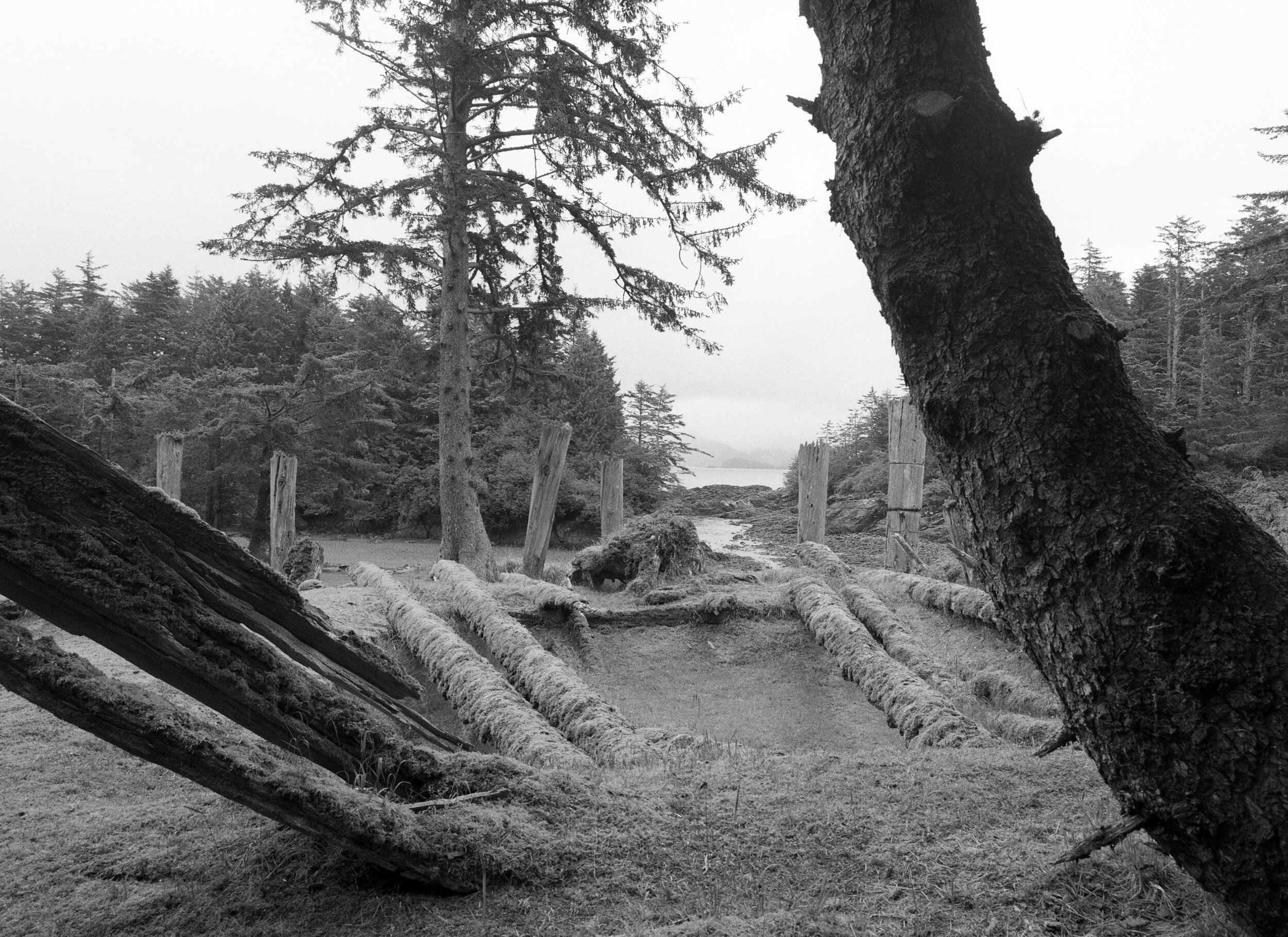
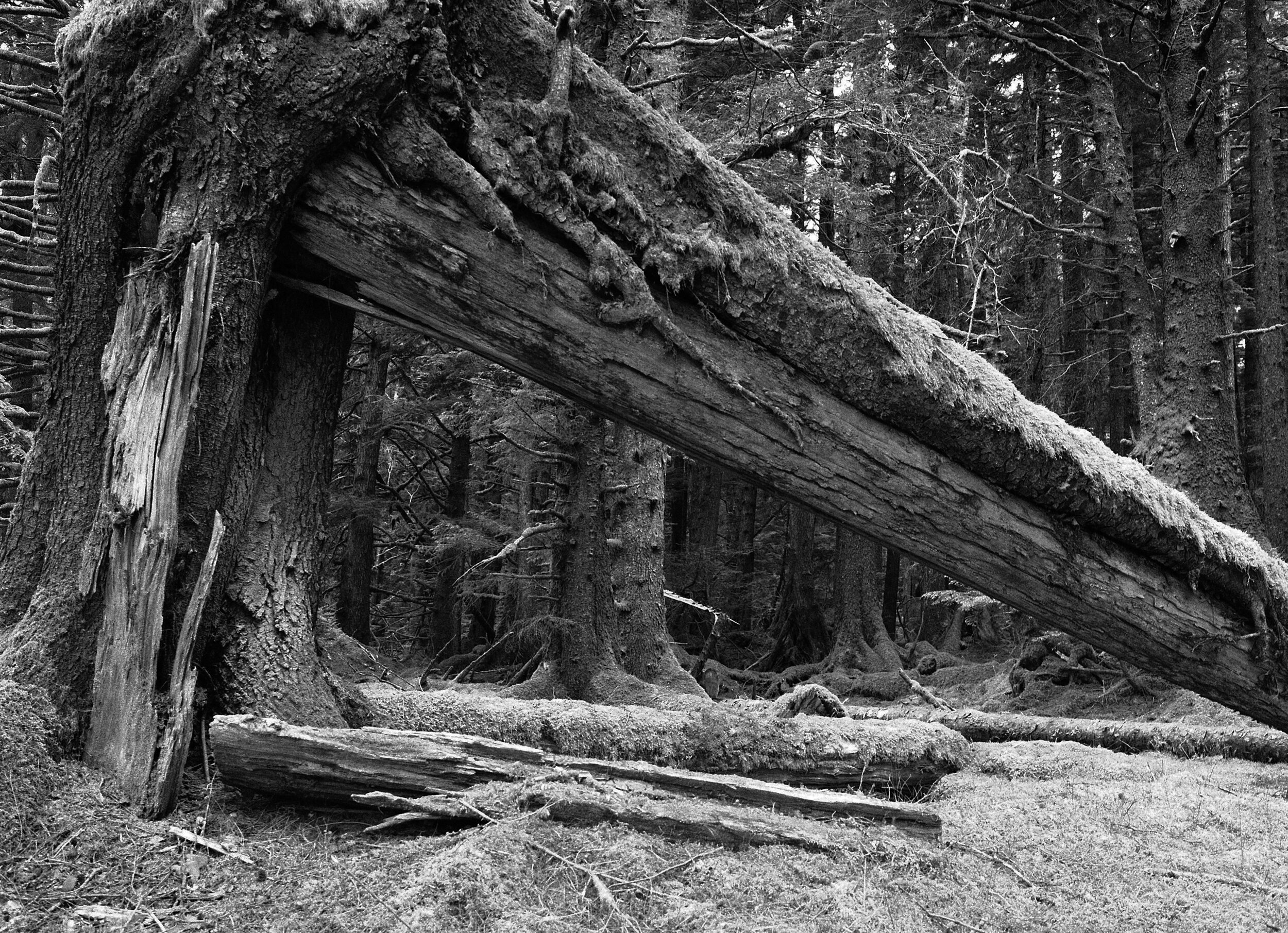



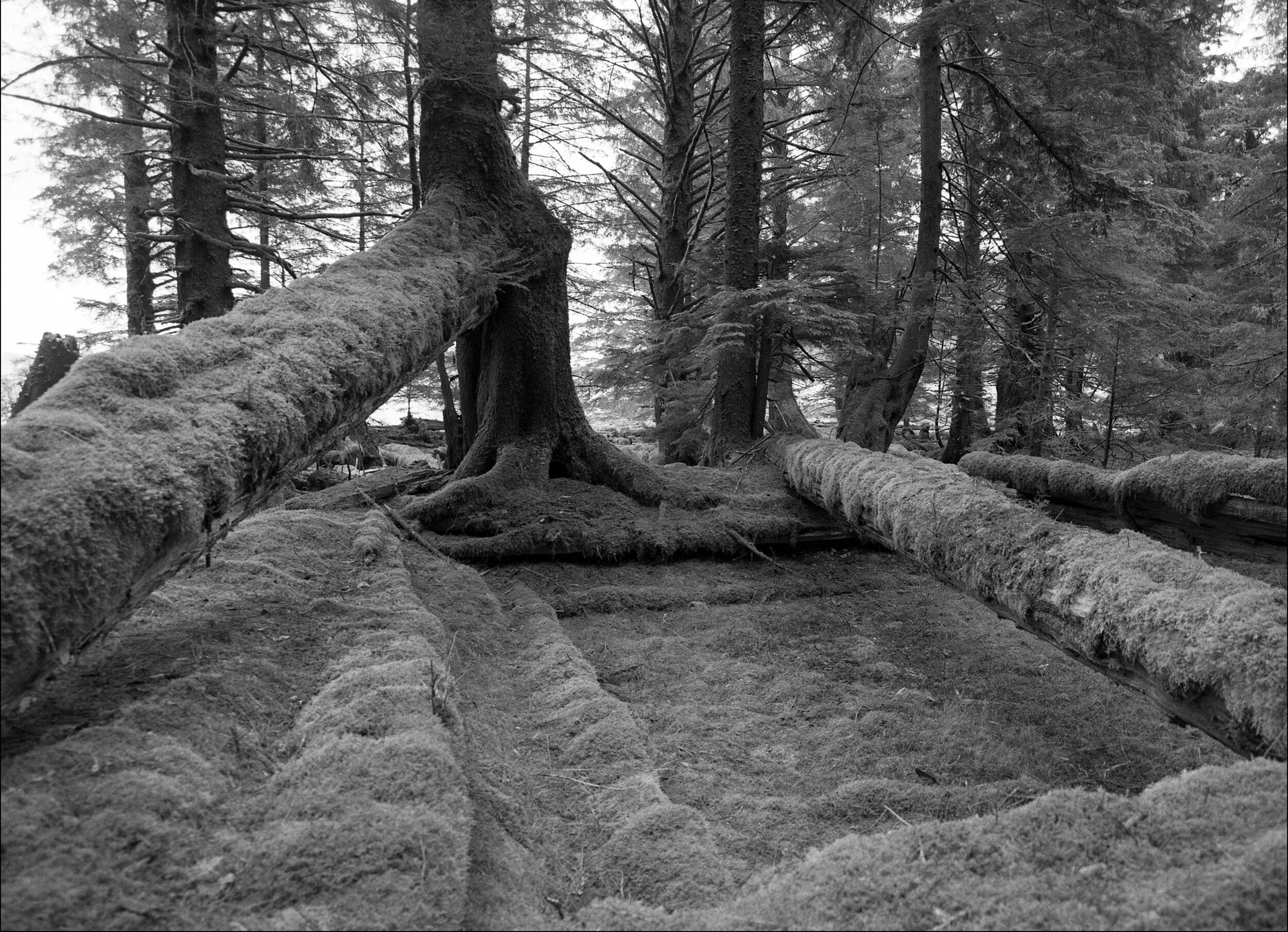
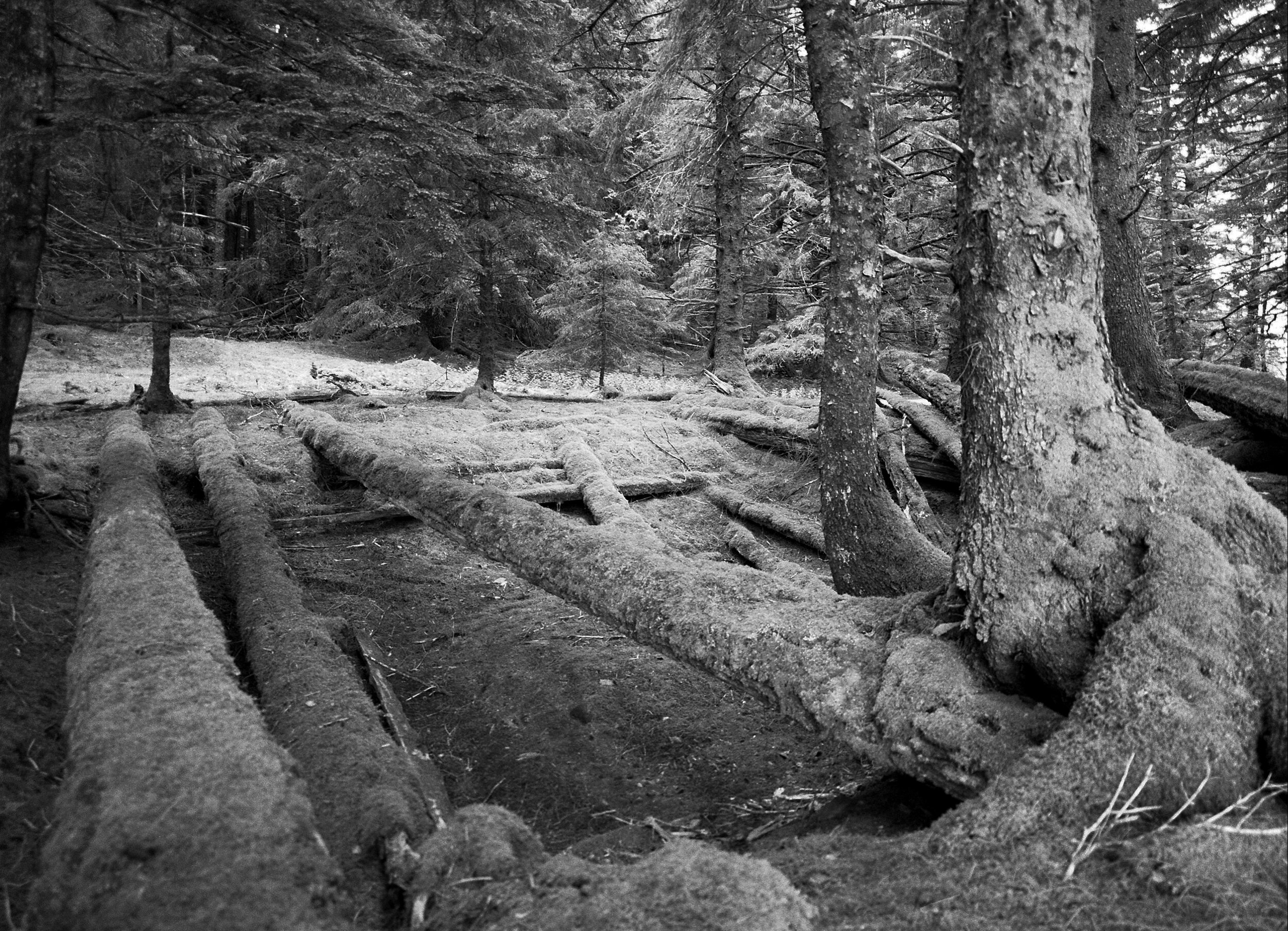
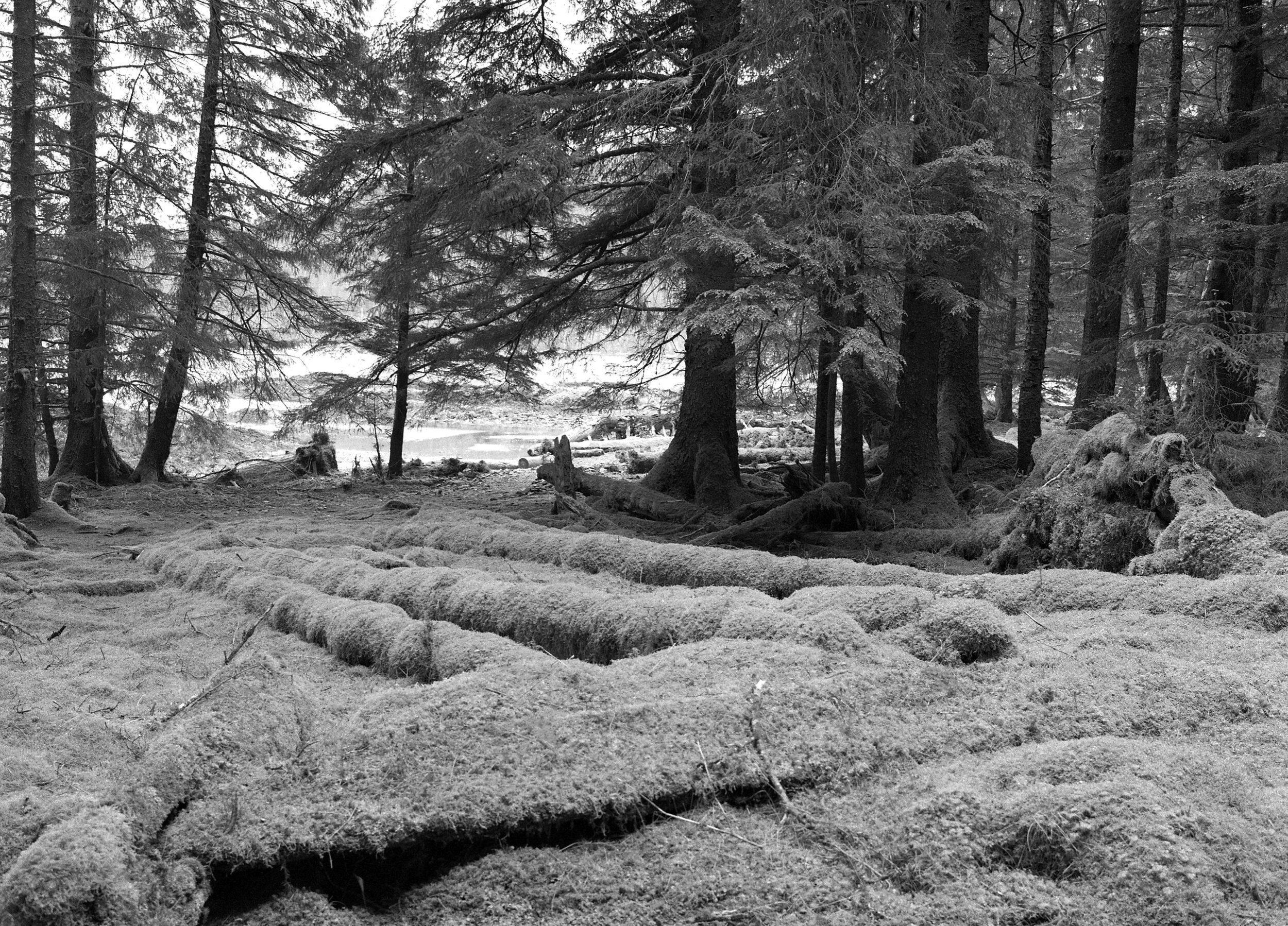
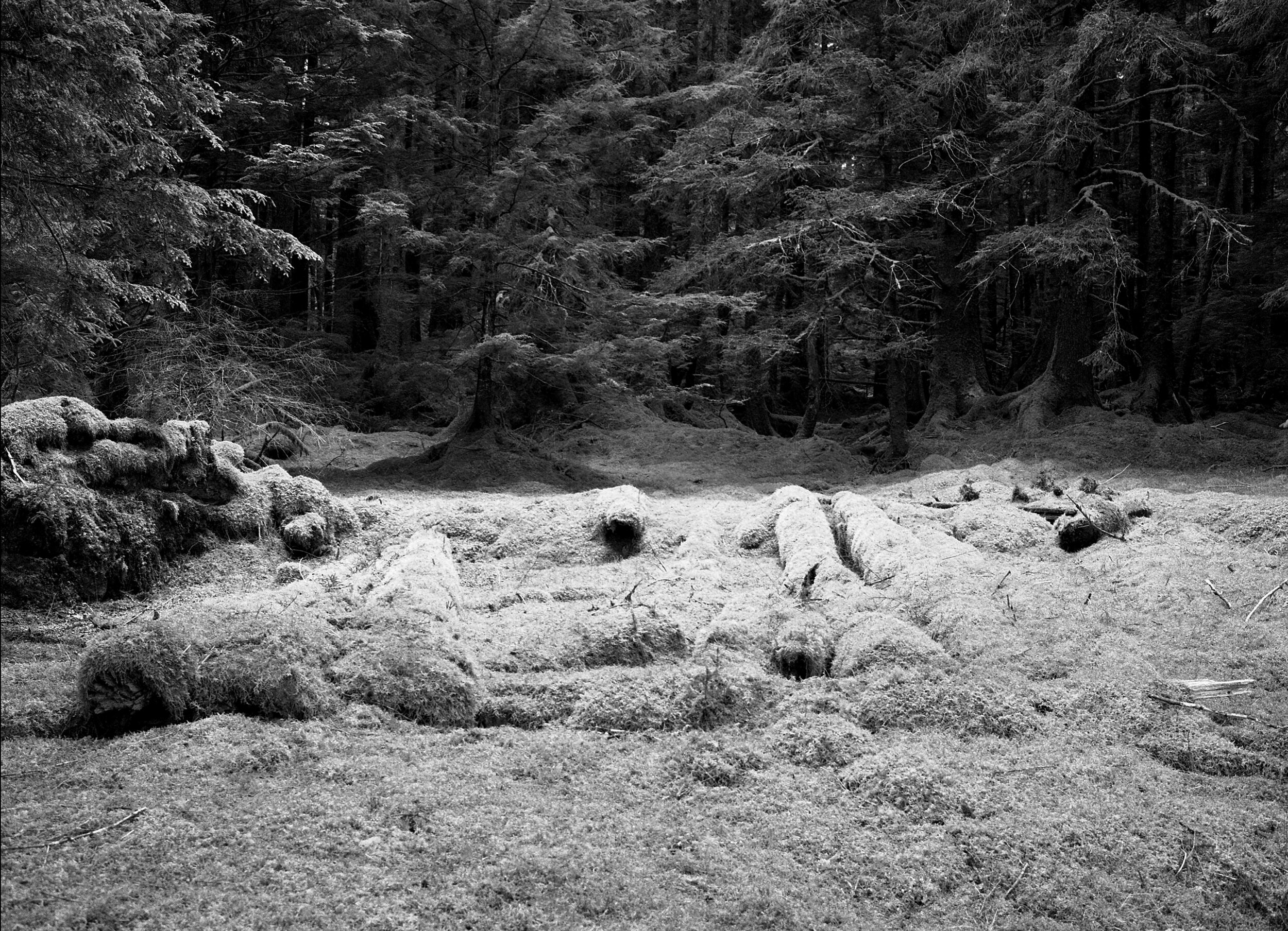
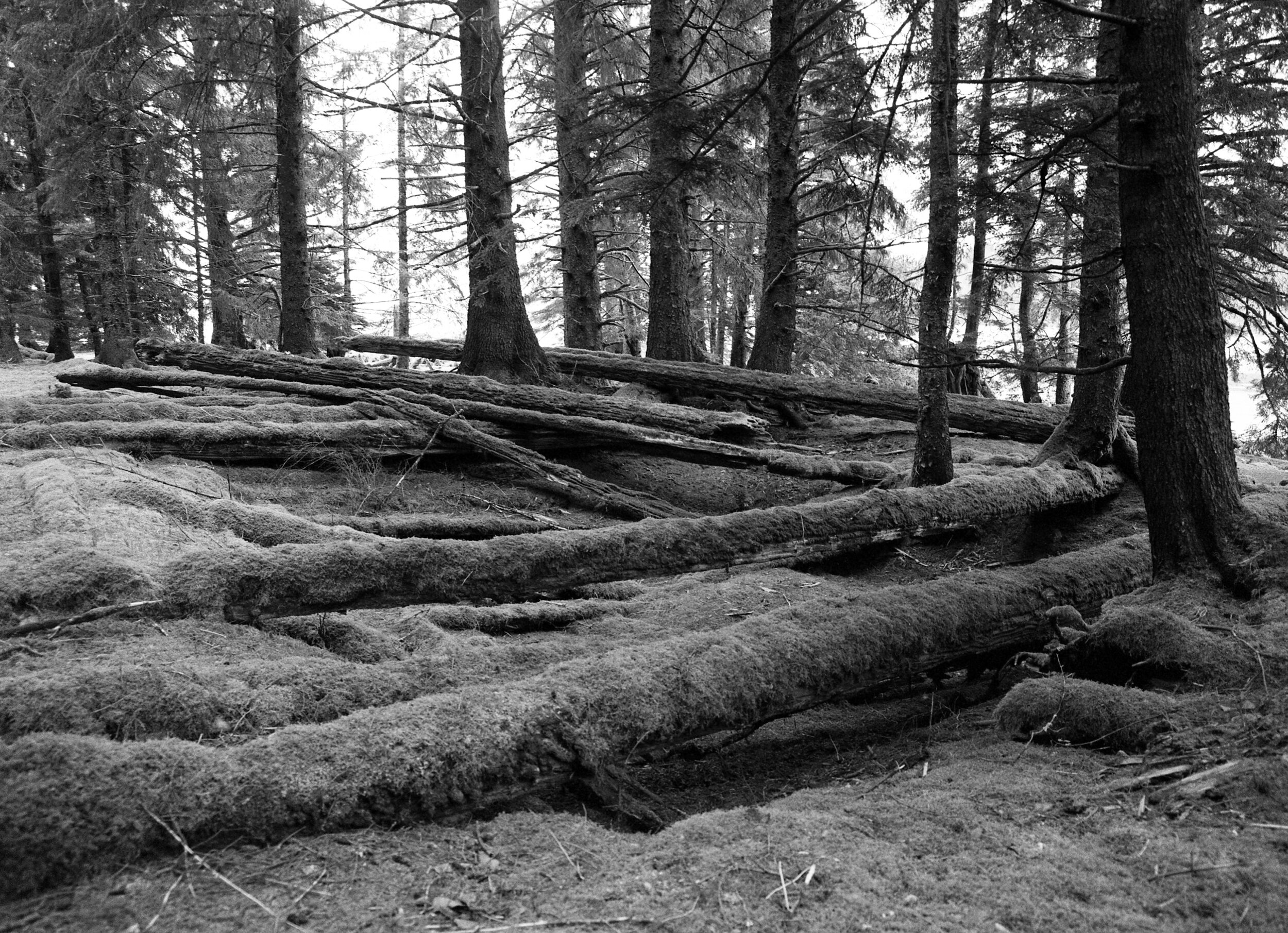
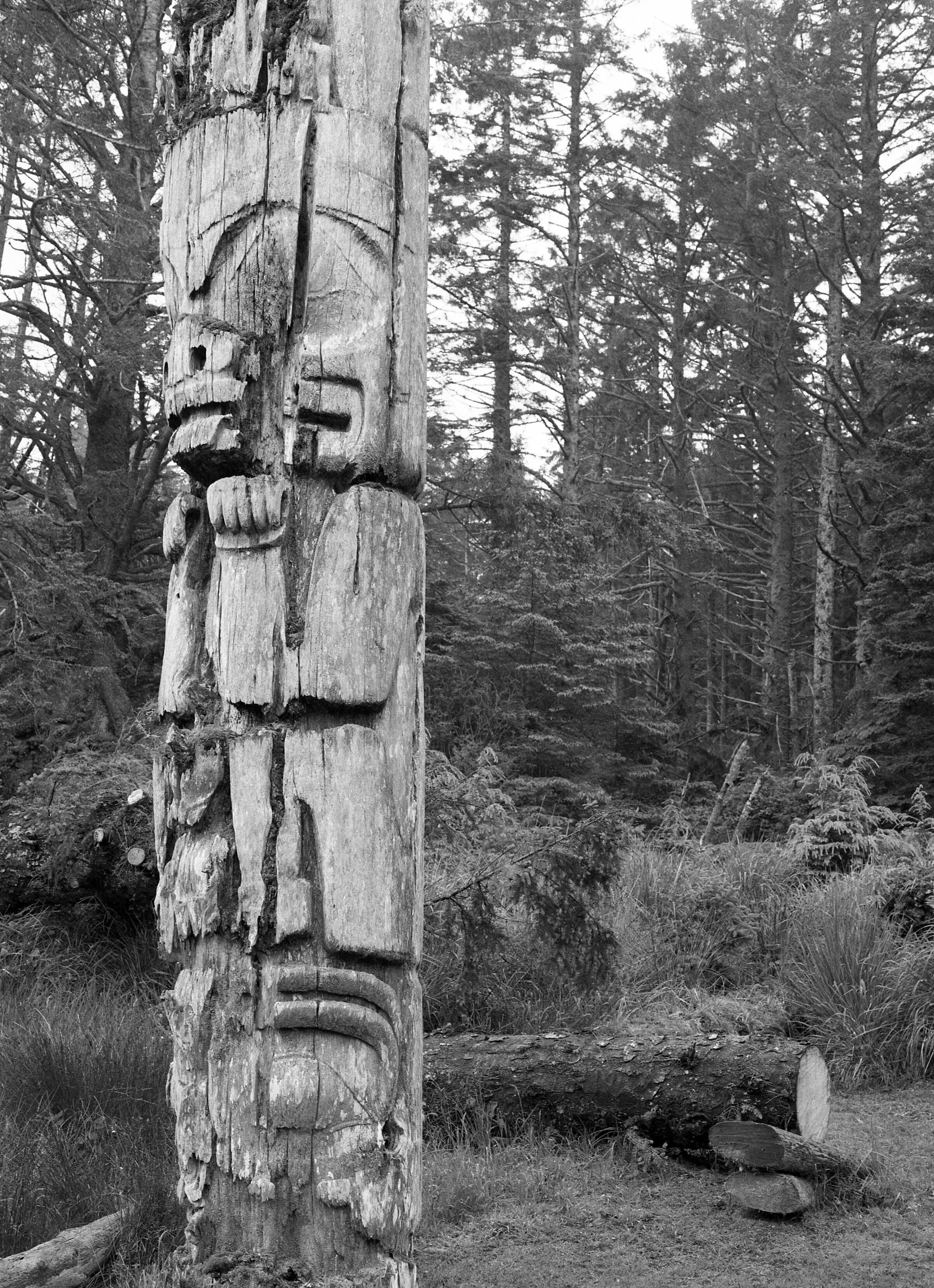
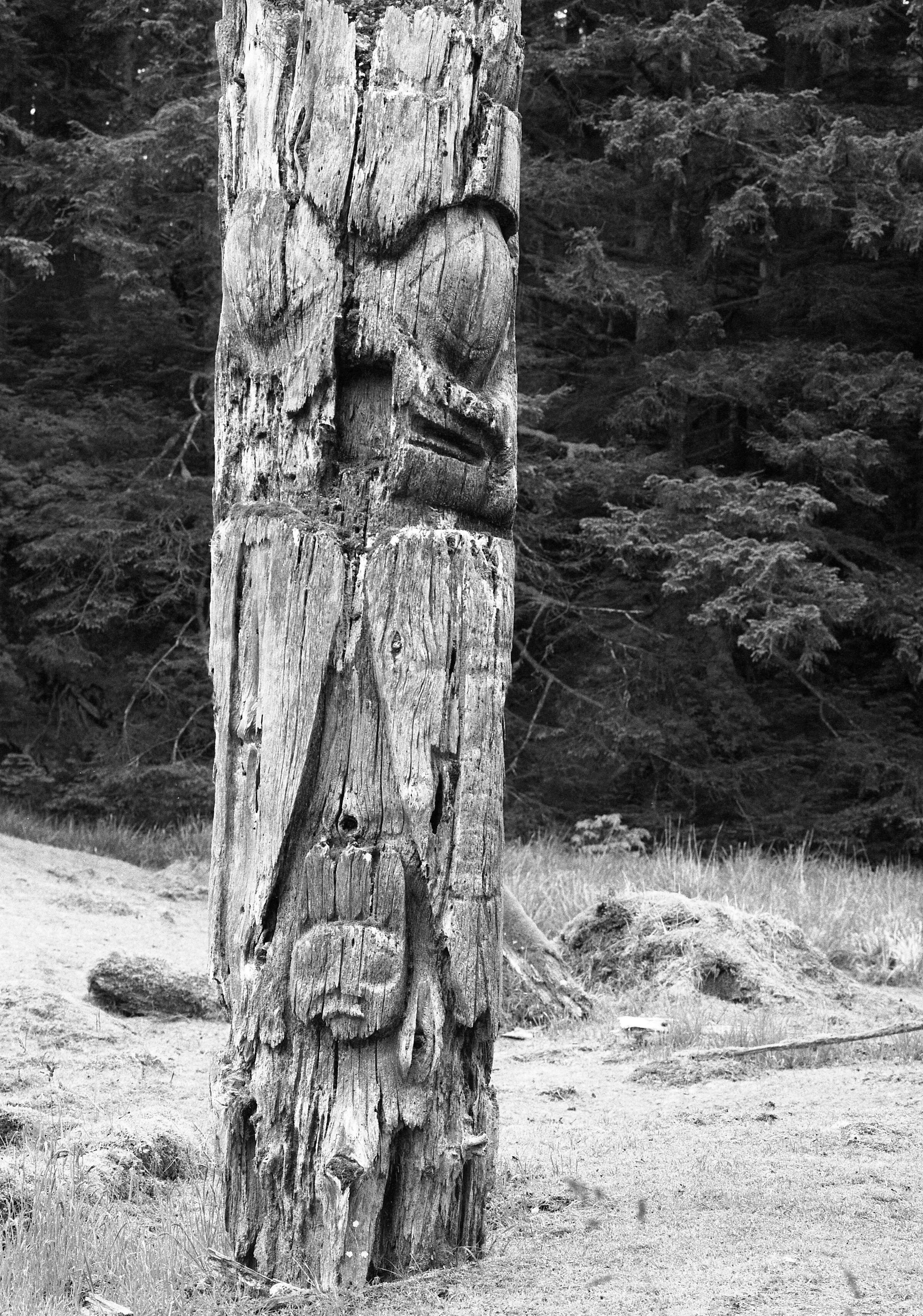

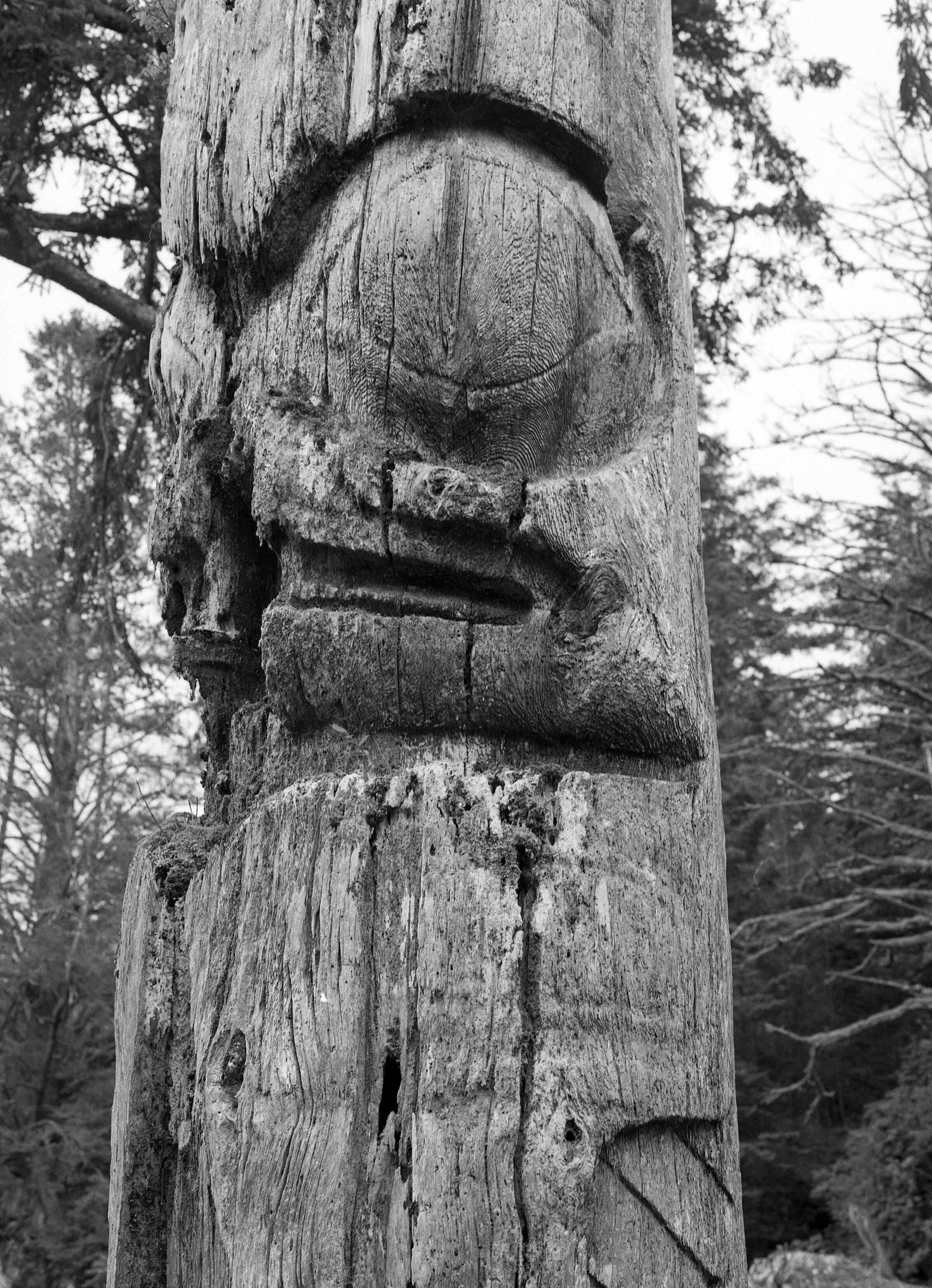
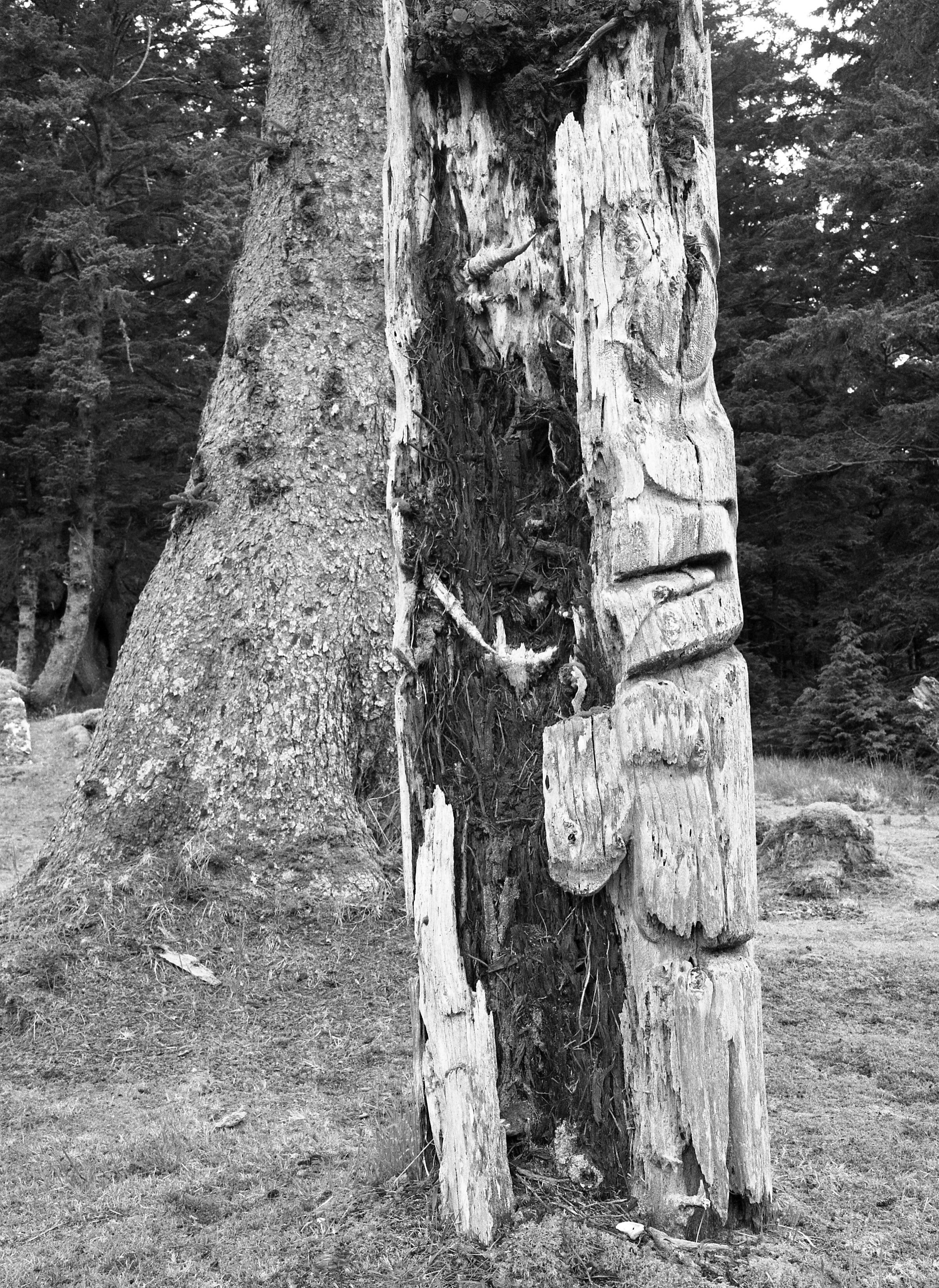
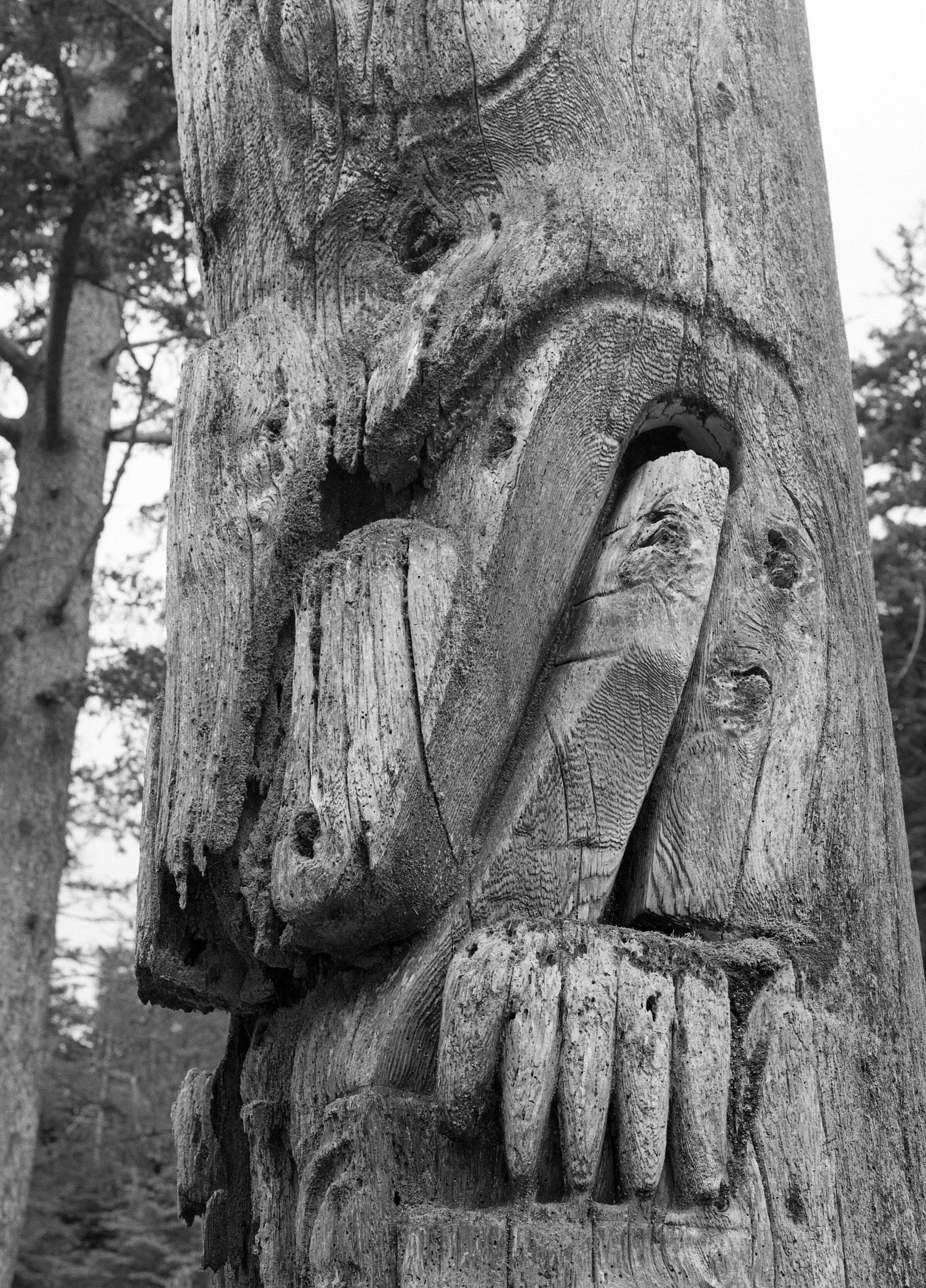
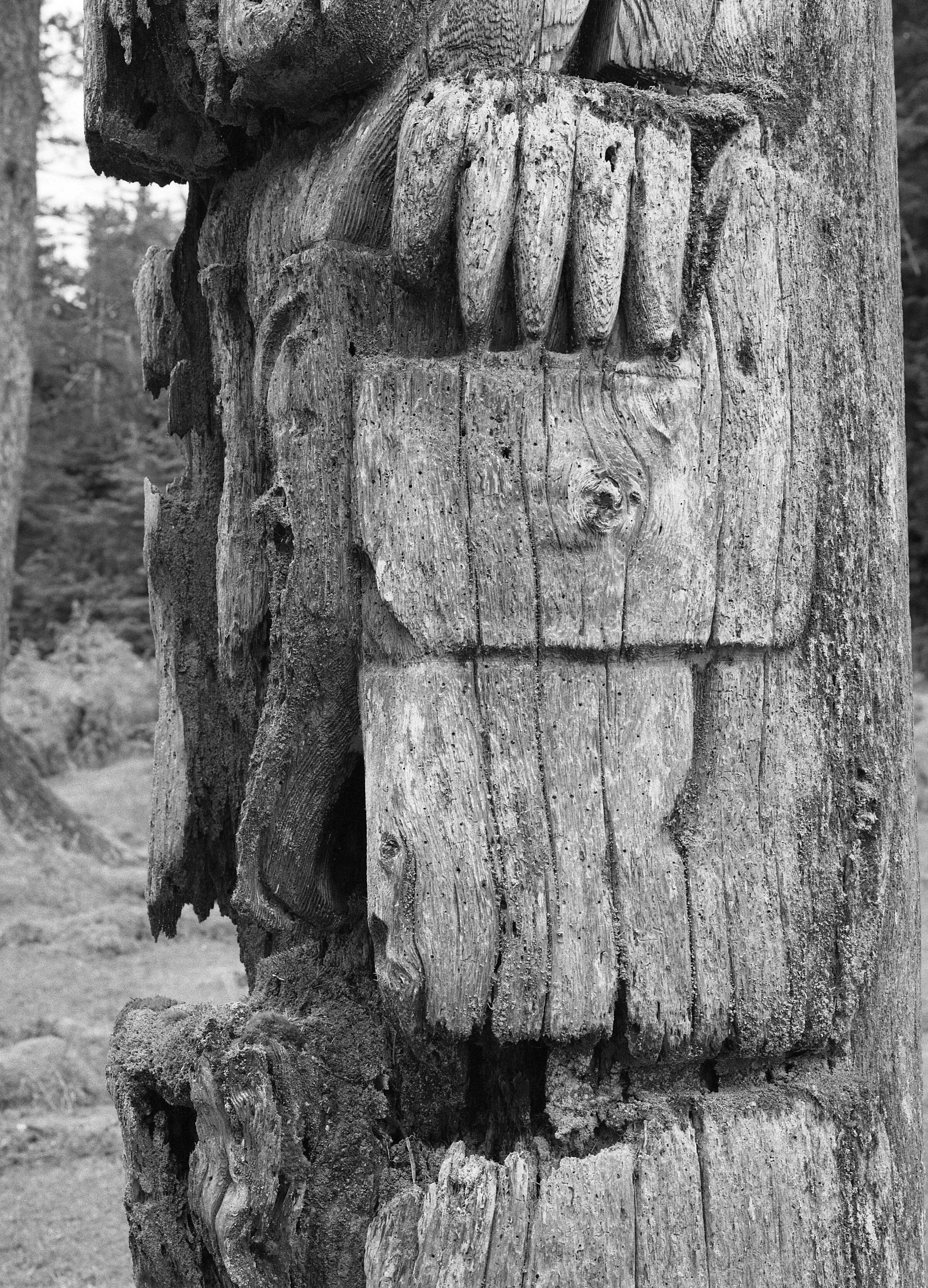
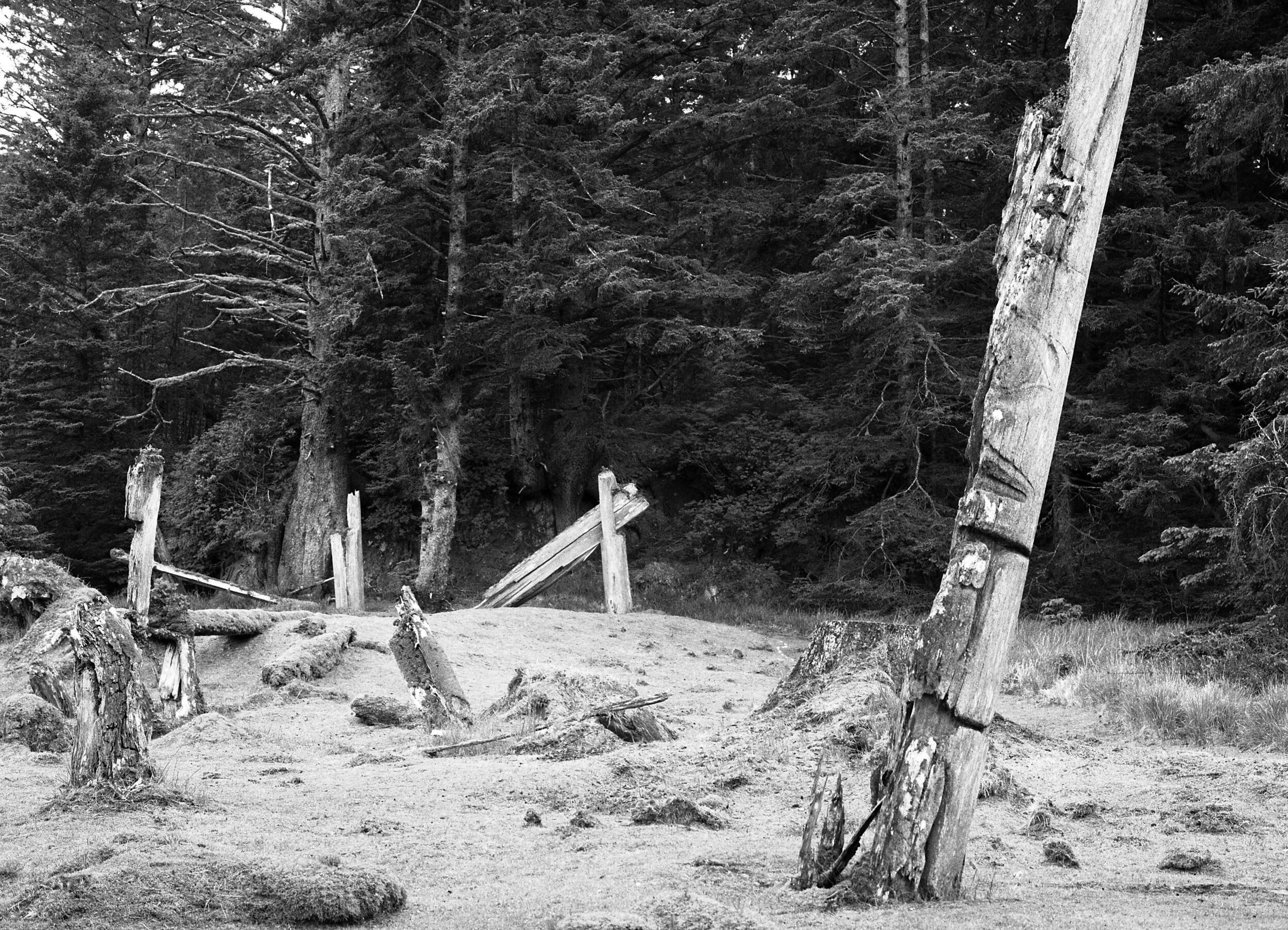
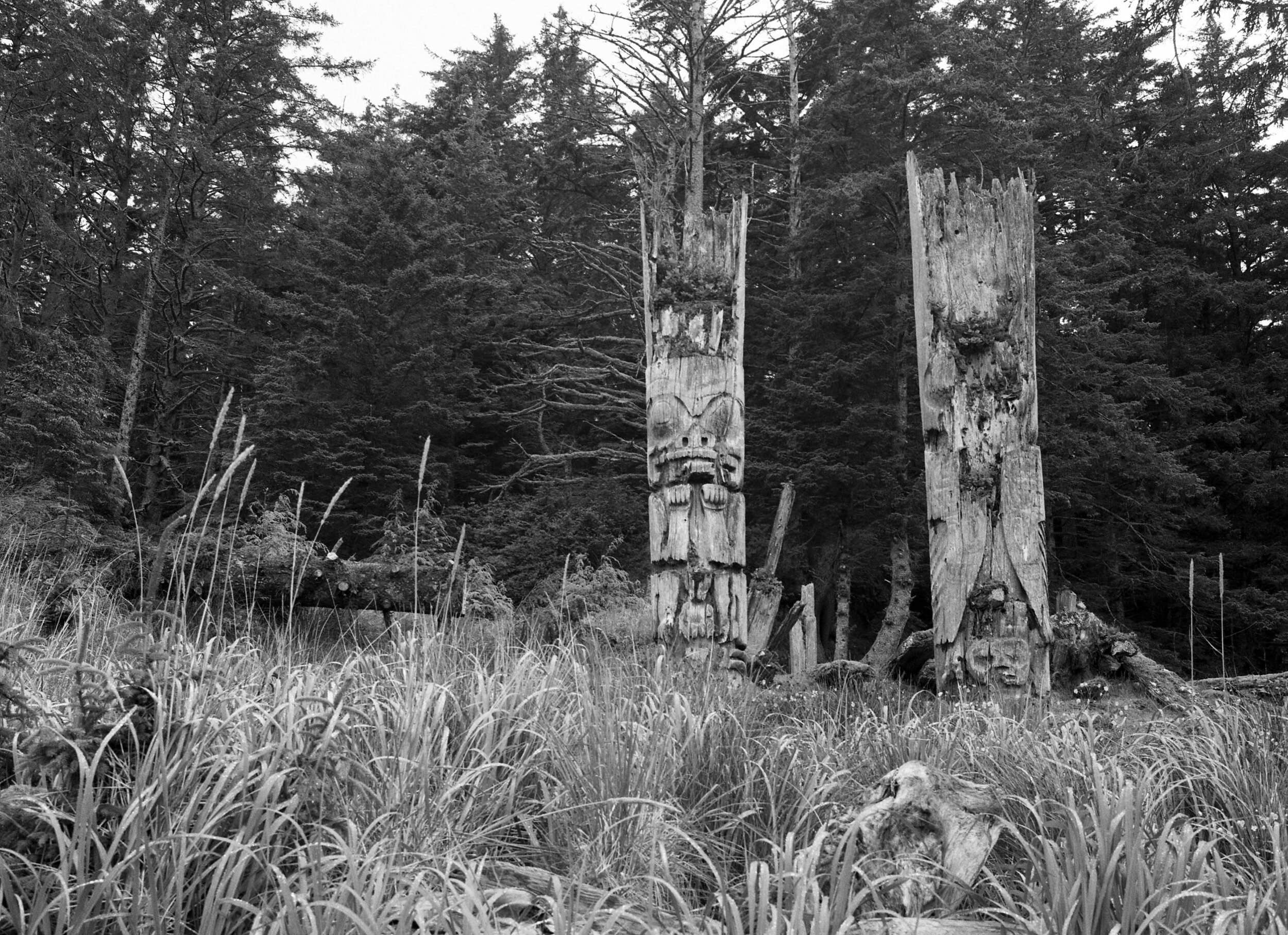

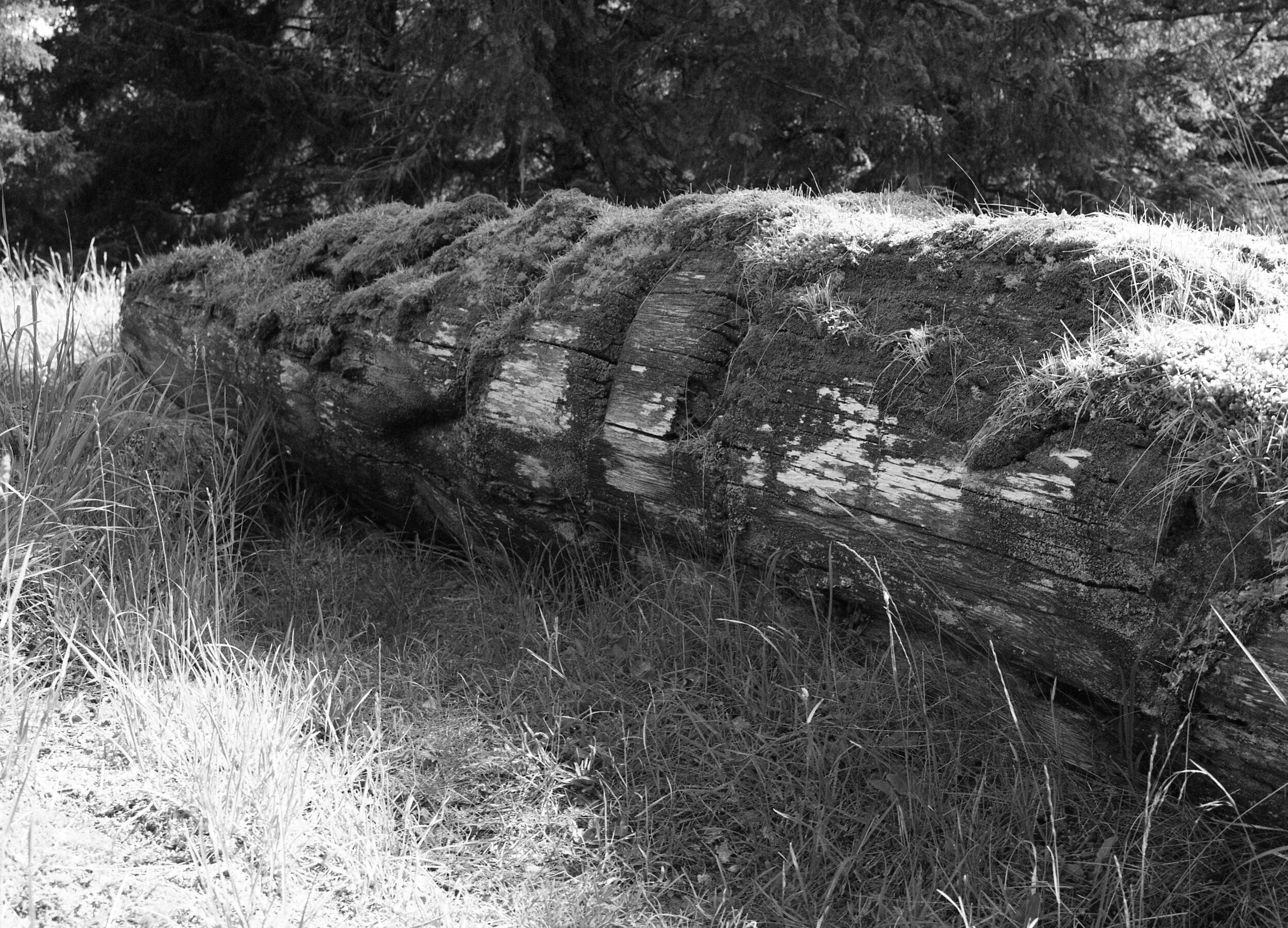
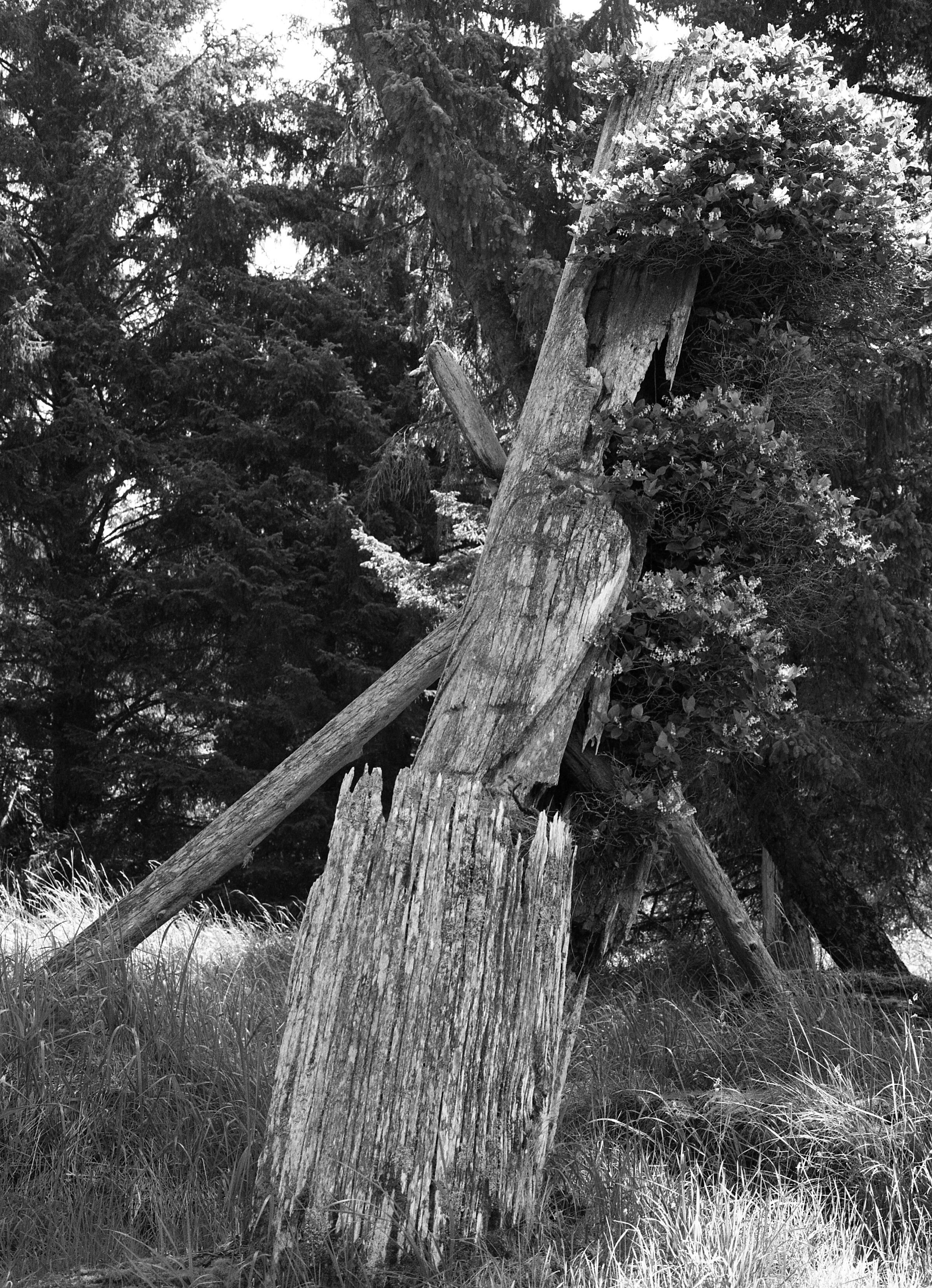
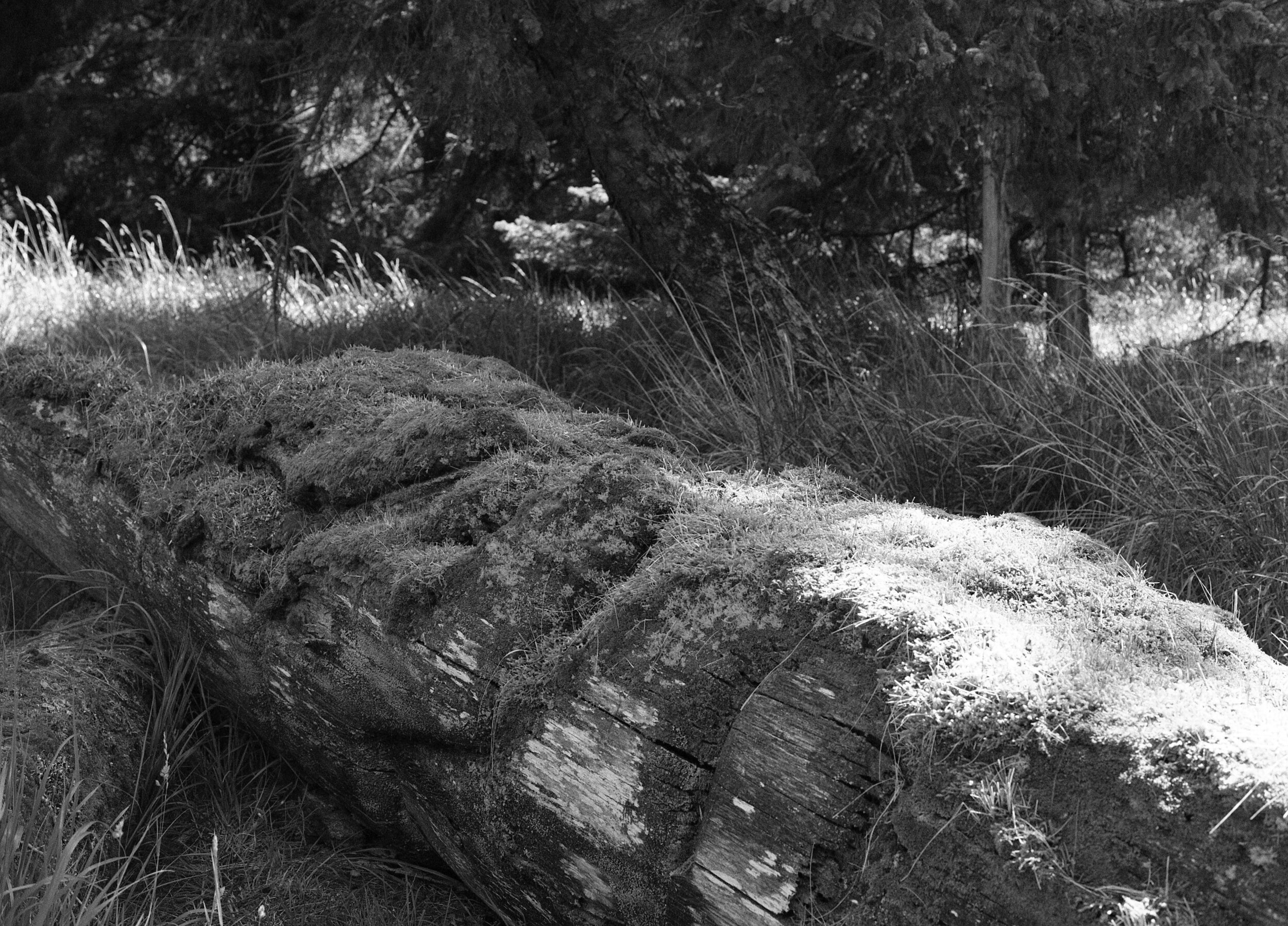
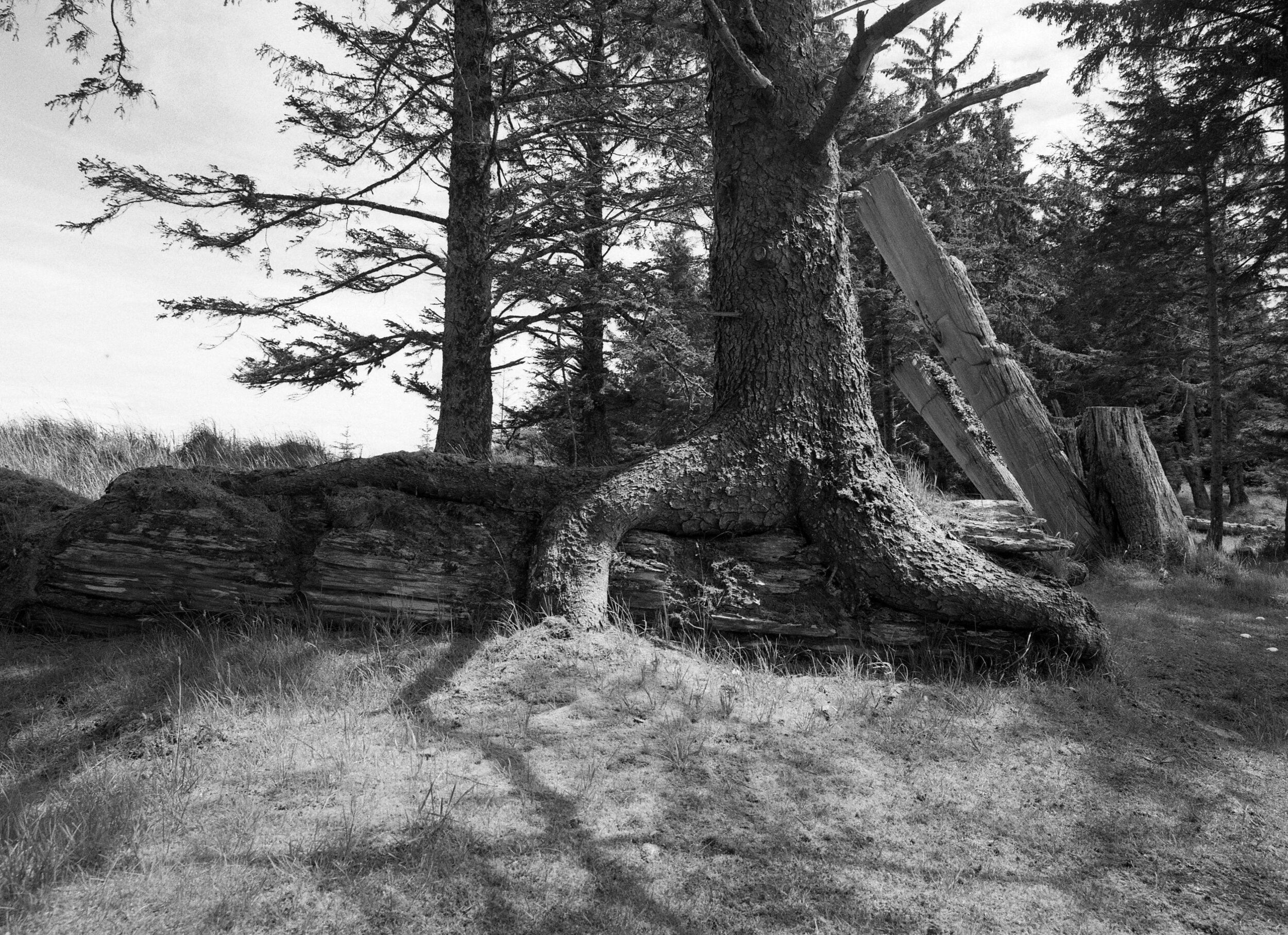
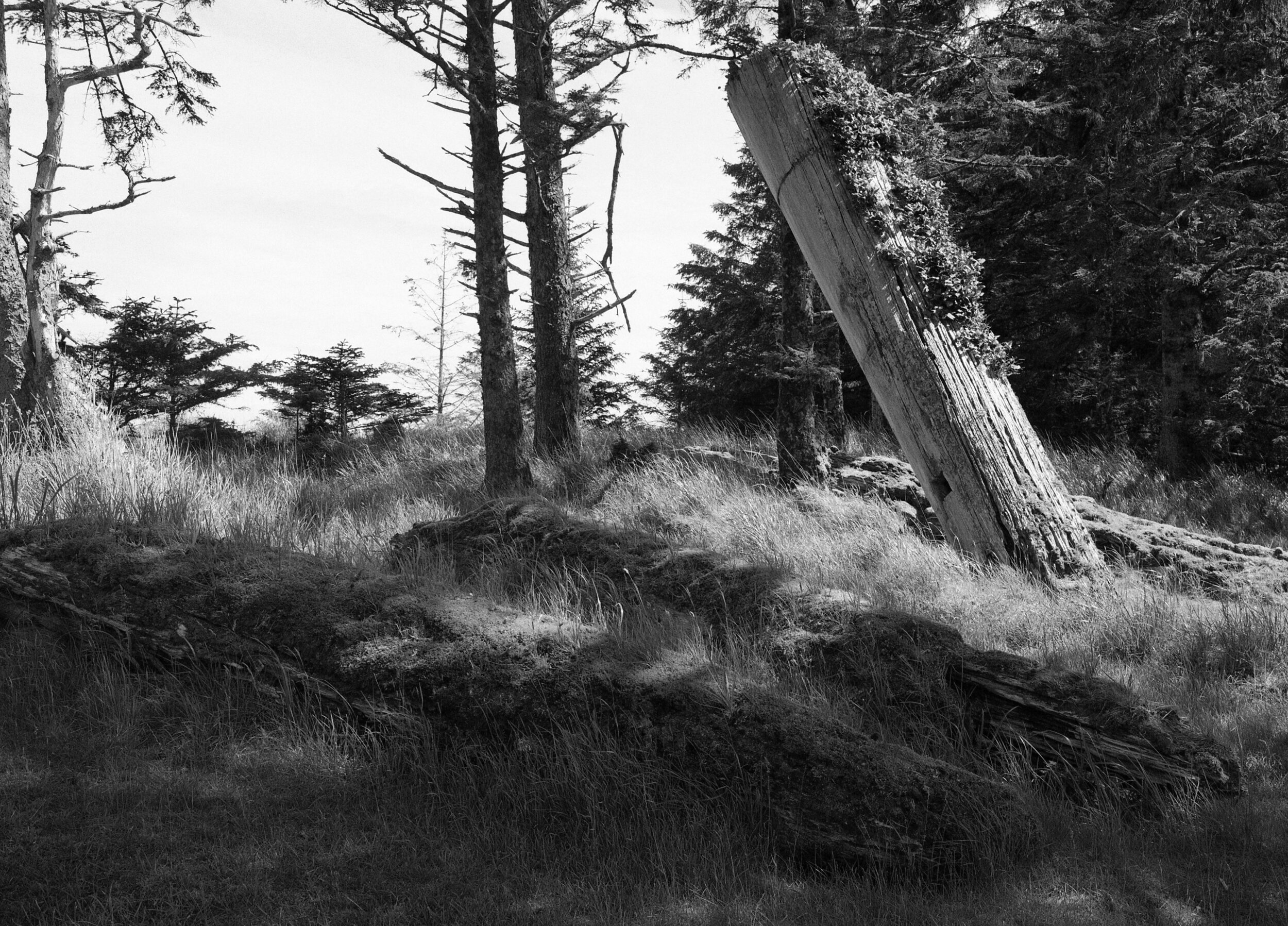

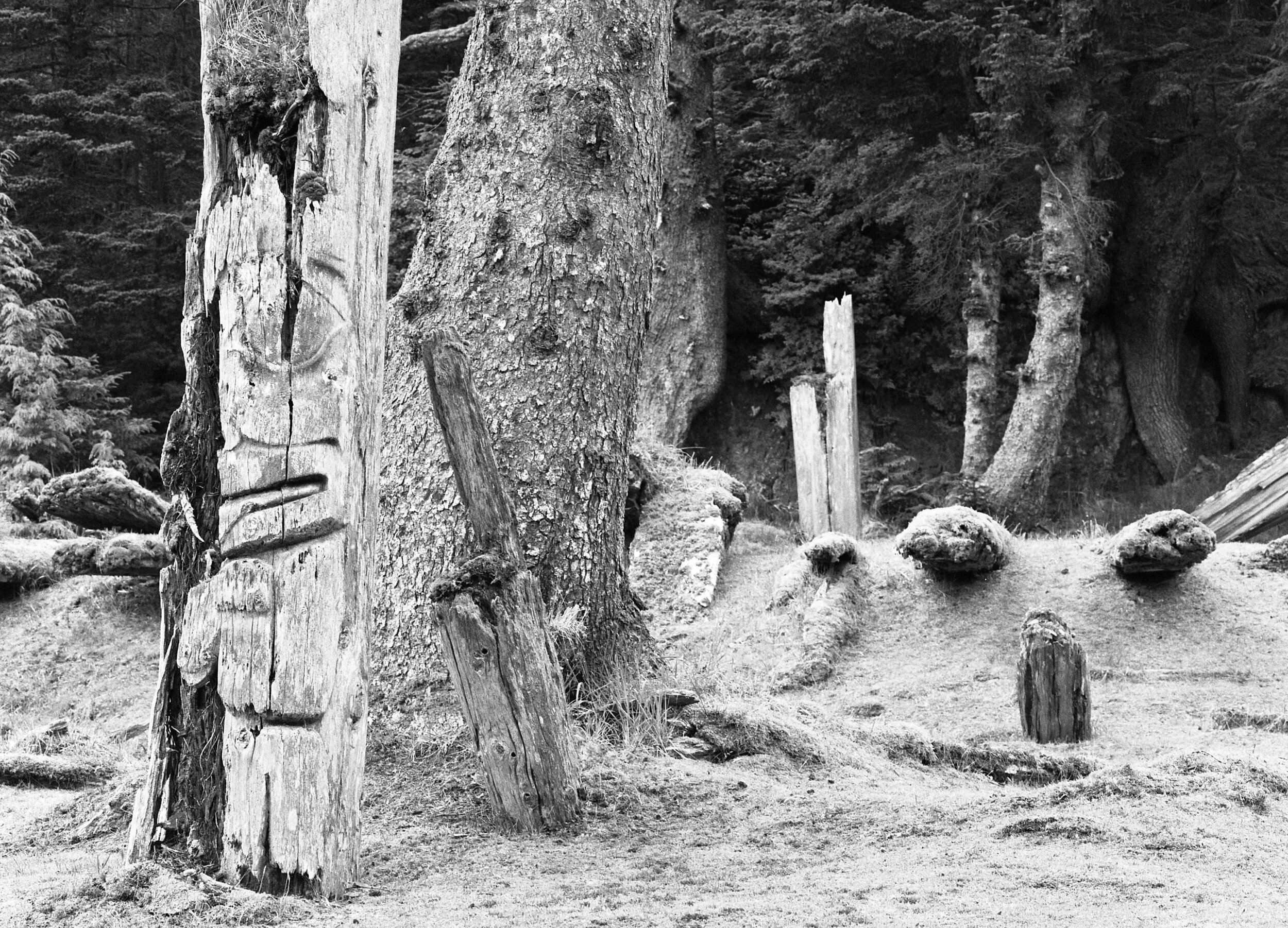

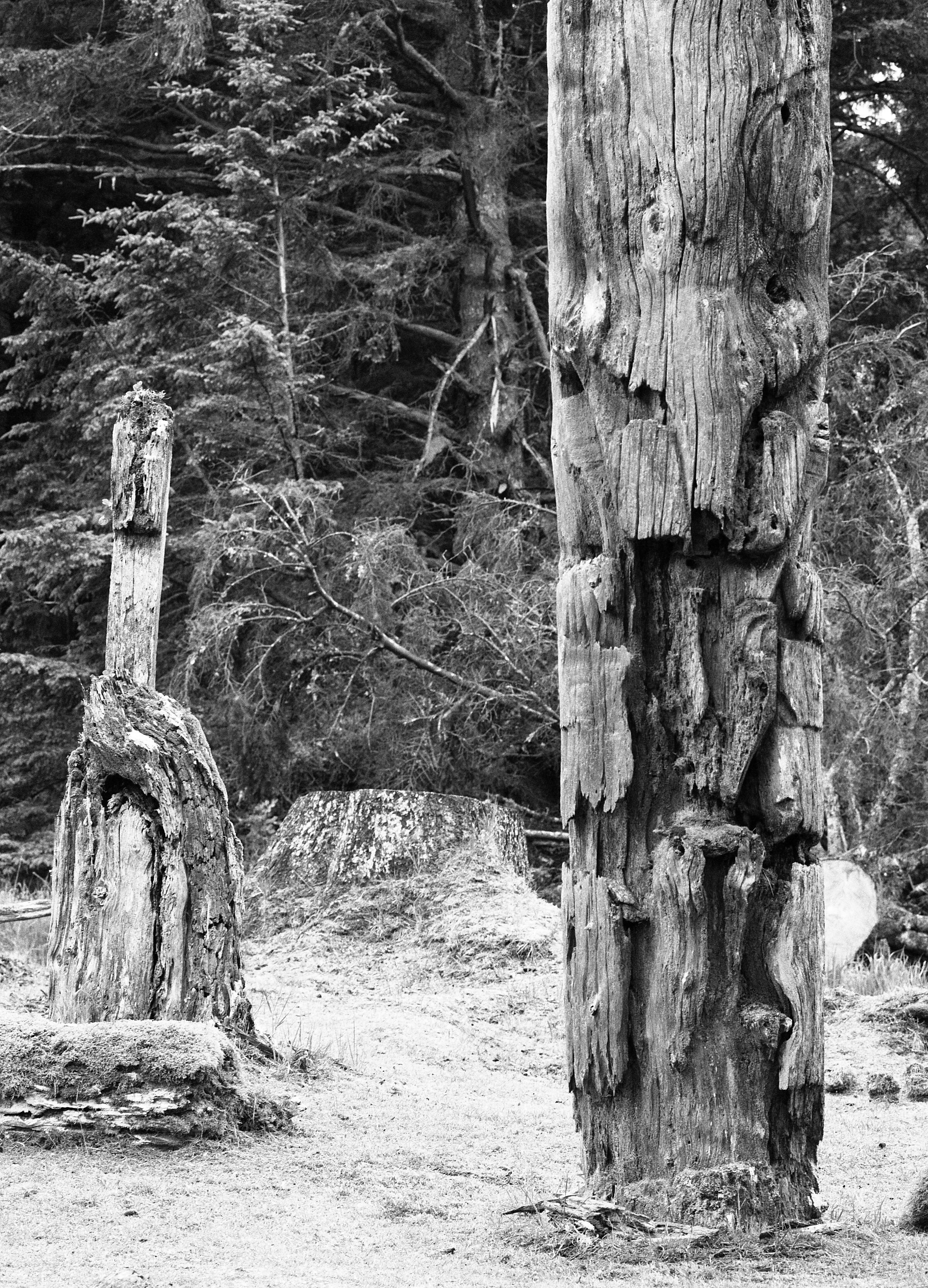
My series Back to the Land highlights impermanence and fragility through platinum palladium photographs of ancient Haida sites on Gwaii Haanas as they return to the earth.
As a child growing up in British Columbia, Canada I saw ancient Haida totems, monuments, and art in decontextualized and sterile museums. I was fascinated with the images and objects I saw, and the rough natural textures of the materials used. These items spoke to me; history and time resonated from them. As I got older and developed more cultural awareness about the Haida I became interested in seeing these pieces in their intended spaces; outdoors and often returning to the earth. Through arduous planning and researching my partner and I were able to visit Gwaii Haanas and experience these places with the Haida Watchmen who told us their family stories. The Watchmen allowed us to wander alone at the sites. I felt the magic and mystery of the places that I had longed for since I was a child and feel my impermanence acutely.
I developed this project in Gwaii Haanas, B.C. in 2019 when travel was still feasible although difficult in this remote area. Gwaii Haanas is an incredibly inaccessible place to reach and spend time in. It requires a commercial flight from the mainland, flying in a 1960s Beaver float plane, taking a small fishing boat with guide, and staying in one of only three homes that line Rose Harbour, the closest dwellings to the national park of Gwaii Haanas. When landing at the Haida villages we had to radio ahead and ask permission from the Watchmen to set foot on land and see the sacred sites.
This project is about the passage of time, the loss of art, culture, and history. It is a deeply personal exploration of culture from the viewpoint of the destructive power of systematic racism and government policies to promote assimilation of culture. My image making process involves researching the sites and history and then exploring the sites with my partner mostly in silence to feel the atmosphere of the site and how it resonates within me. I take medium format film-based images, develop the film myself, make and print large format negatives, and finally hand coat platinum palladium emulsion onto paper in the darkroom and print the images on delicate but resilient handmade Japanese Gampi paper. The Gampi paper is incredibly thin but holds a luminous quality that was reminiscent of the west coast light at those Haida sites. The prints are tactile and have a subtle long-range tonality and depth.
I struggle with the concept of my own impermanence, but I help reconcile this emotion through the tradition of photographic preservation and storytelling. Working in solitude gives me time to reflect on my own role in cultural assimilation that has taken place in our country. This series is essential now as Canada attempts to move towards reconciliation it is important to not only discuss the ongoing atrocities that take place in the First Nation communities but to also look at the dynamic and complex cultures that were impacted by these brutalities. As many cultural artifacts were lost over time the Haida in Gwaii Haanas have a unique position where their ancestral communities and story tellers remain present on the land. I am an outsider visiting the land, but I can feel my deep connection with it, the people, and art that remains.
